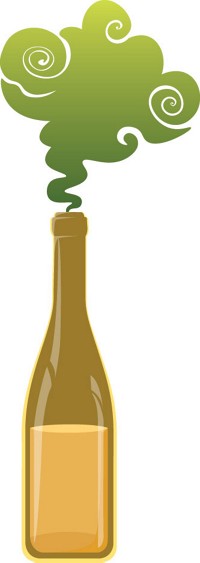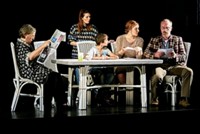Advertisement
Grab your lab coat. Let's get started
Welcome!
Welcome!
Create an account below to get 6 C&EN articles per month, receive newsletters and more - all free.
It seems this is your first time logging in online. Please enter the following information to continue.
As an ACS member you automatically get access to this site. All we need is few more details to create your reading experience.
Not you? Sign in with a different account.
Not you? Sign in with a different account.
ERROR 1
ERROR 1
ERROR 2
ERROR 2
ERROR 2
ERROR 2
ERROR 2
Password and Confirm password must match.
If you have an ACS member number, please enter it here so we can link this account to your membership. (optional)
ERROR 2
ACS values your privacy. By submitting your information, you are gaining access to C&EN and subscribing to our weekly newsletter. We use the information you provide to make your reading experience better, and we will never sell your data to third party members.
Education
Newscripts
As American As Chemical Pie
by Faith Hayden
December 1, 2008
| A version of this story appeared in
Volume 86, Issue 48

Sometimes the best chemistry experiments happen in the kitchen. Recently, for a dinner party with some friends, I was charged with bringing the homemade apple pie. Having never baked a pie in my life, I scoured the popular website allrecipes.com for the best pie concoction. Surprisingly, chemistry made a cameo in the very first hit with a recipe titled "CHEMICAL APPLE PIE," submitted by John Pile.



















Pile received the recipe about 20 years ago during his middle school chemistry class in the form of a lab sheet, he tells C&EN. He posted a copy of the actual lab sheet on his blog, alaskajohn.com. "Our senses are very limited and easily fooled," the lab sheet reads. "A chemical can prepare a synthetic flavor that our senses cannot differentiate from the real thing. In this experiment you will make an apple pie. It will be an unusual apple pie because it will contain no apples!"
So what's the key component? Butter crackers, with a dash of NaCl, KHC4H4O6, and C12H22O11 (table salt, cream of tartar, and sugar).
Some digging around on the Internet indicates the original recipe dates back as far as 1852. According to the blog "Who Cooked That Up?" by J. J. Schnebel, the pie was invented by pioneer women who didn't have access to real apples. It resurged during the Great Depression, when apples became a treat Americans couldn't afford.
Ritz Crackers, founded in 1934, began putting a recipe called "Mock Apple Pie" featuring the cracker on the back of its box. The Ritz recipe has since been moved from the box to online and can be found at kraftfoods.com.
Curious, I decided to conduct the pie experiment for myself and serve it at the dinner party I was attending. For this highly amateur chemist, watching the ingredients react was fascinating. The recipe calls for each cracker to be placed in the boiling sugar-water-tartar mixture one at a time and not stirred. For the first few moments, I played the part of the skeptical science student; the crackers looked mushy, which was far from appetizing. I couldn't imagine how a sad, soggy cracker could magically morph into anything resembling a scrumptious baked apple.
But after three minutes of being submerged in the boiling ingredients, the crackers actually transformed into a golden-colored filling that smelled like, and somewhat resembled, apples. An applelike aroma filled the apartment while the cracker pie baked. But the big question remained: Would the dinner guests be fooled by my phony pie?
As my friend Colleen cut into her piece, she crinkled her nose. "What did you do to this?" she asked. "Did you use applesauce?" I couldn't help but chuckle. "No," I coyly replied. "Not applesauce."
"It's like gelatin," she said, taking a bite. None of the other guests seemed to notice anything was amiss, aside from my give-away giggling.
"You are laughing like a banshee over there, what gives?" one asked.
When I confessed to my friends that they were actually participating in a science experiment, they quickly put the forks down. My friends admitted that although my dessert tasted like apple pie, the consistency was off, and it wasn't "crunchy."
Even though the taste-test results were mixed, I was still impressed that boiled crackers resembled and tasted anything close to an apple. "Leave it to Faith to feed us cracker pie," Colleen said, emptying the remains of my science project into the garbage. "Where's the blueberry pie I bought? Someone break it out."
Faith Hayden wrote this week's column. Please send comments and suggestions to newscripts@acs.org.





Join the conversation
Contact the reporter
Submit a Letter to the Editor for publication
Engage with us on Twitter